A few weeks ago I published a series (1, 2, 3) of articles on J’Élle Stainer’s compact subcontrabass saxophone, which now resides in Italy. Attilio Berni is now the owner of the impressive horn, and he uses it regularly in his performances with the Italian Saxophobia Project.
Sure the horn is impressive, but the people at J’Élle Stainer are not content to just have 1 option for any voice of sax. True to form, Gilberto Lopes has been working, together with Joao Luiz da Rocha, to ensure a full-size version of a subcontrabass saxophone is realized.
Joao Luiz da Rocha is the creative genius who designs and crafts the very special horns that J’Élle Stainer makes. While Gilberto Lopes is the man responsible for the company’s marketing, product research, trade fairs and financing.
Source: Gilberto Lopes Used With Permission
It has been 5 years in the making, but in only a few short months, this big sax—which has been nicknamed Anaconda—will be finished. It is not fully assembled yet, so final numbers aren’t in, but at present it stands approximately 2.8 metres tall (just over 9 feet) without a stand, and weighs in at 34 kg (74.9 lbs). Its weight will certainly top out at over 75 lbs, when all the key guards and reinforcements have been attached.
Gilberto Lopes was kind enough to send me some recent photos of this monster horn. These shots will give you an idea of just how large this horn is, and how small our conventional horns are in comparison.
In these photos you will see how it lives up to its Anaconda name. Joao Luiz da Rocha is having to fend off an attack from his own creation.  I guess the low A bari just wasn’t filling enough. 😉
I guess the low A bari just wasn’t filling enough. 😉
Source: Gilberto Lopes Used With Permission
Horn Specs:
- Bb subcontrabass saxophone (1 octave lower than the bass).
- Range: low Bb to high F#. This actually places it outside the normal piano range, since a regular piano’s lowest note is usually an A—the low B on this horn.
- Height: Approximately 2.8 metres.
- Weight: 34+ Kilograms (More to come as horn is completed).
- Will be engraved with plants and flowers from the Amazon region of Brazil.
As mentioned, this full-size contrabass is very close to completion, but still has a way to go before it will be ready for stage performances. J’Élle Stainer has, however, recorded a brief video to provide an audio sample of the sax in progress.
So just when you thought your collection of saxophones was complete, think again. The good people at J’Élle Stainer seem to always have something in the works, to keep those G.A.S. fires burning brightly. ![]()




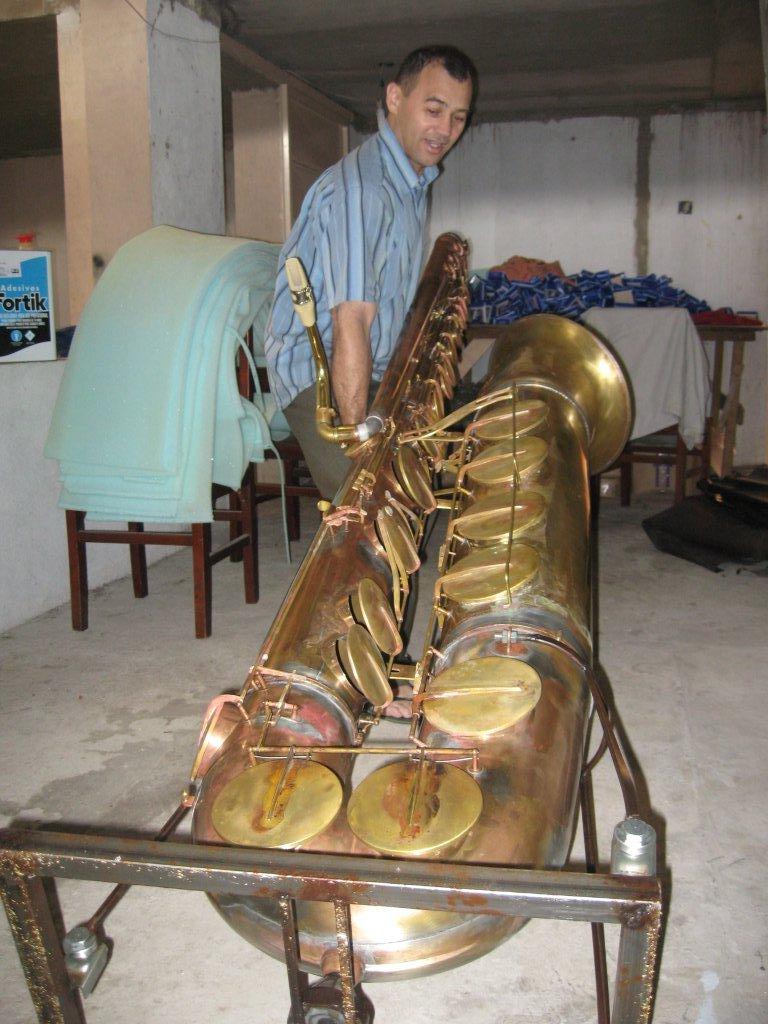
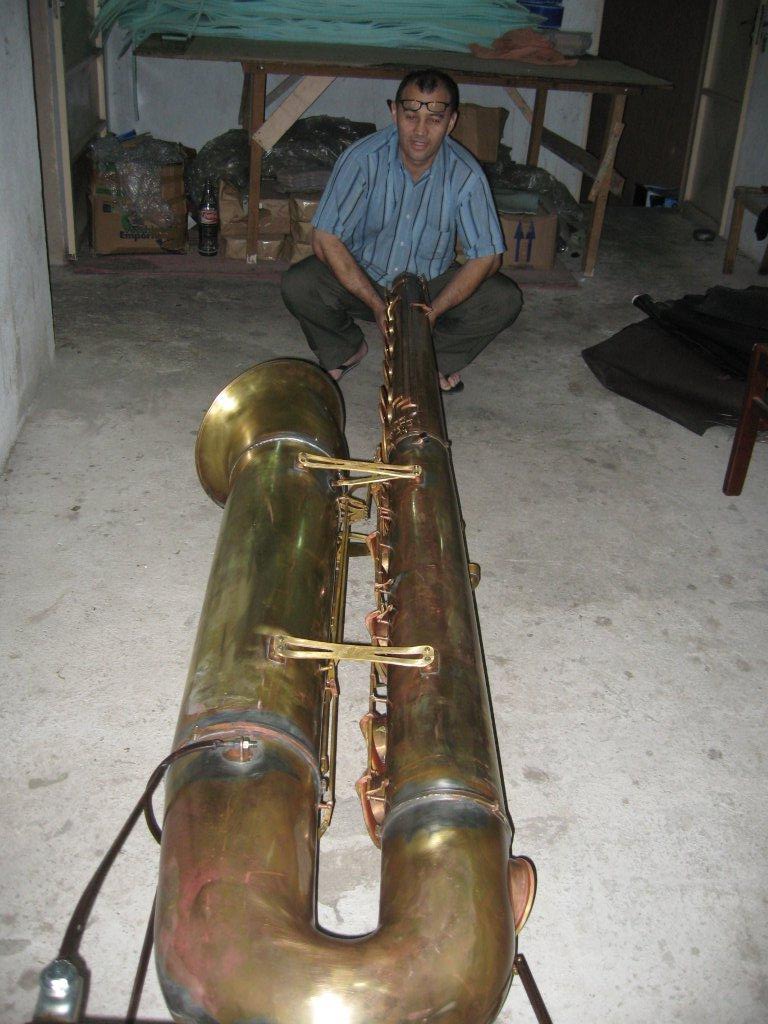
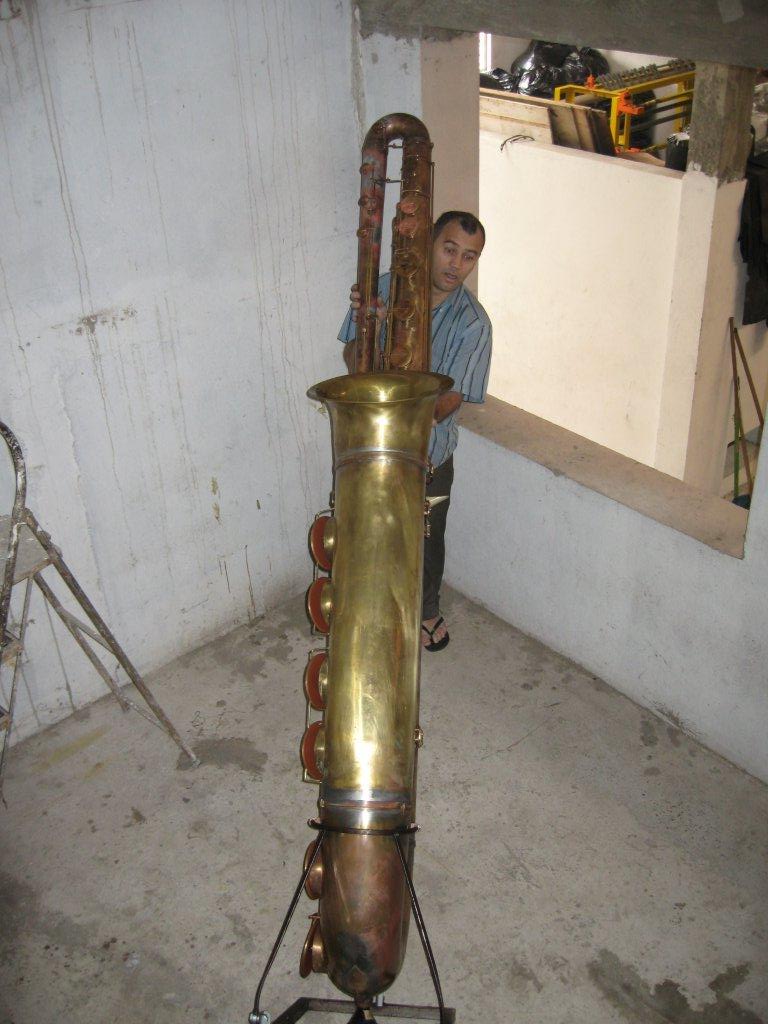

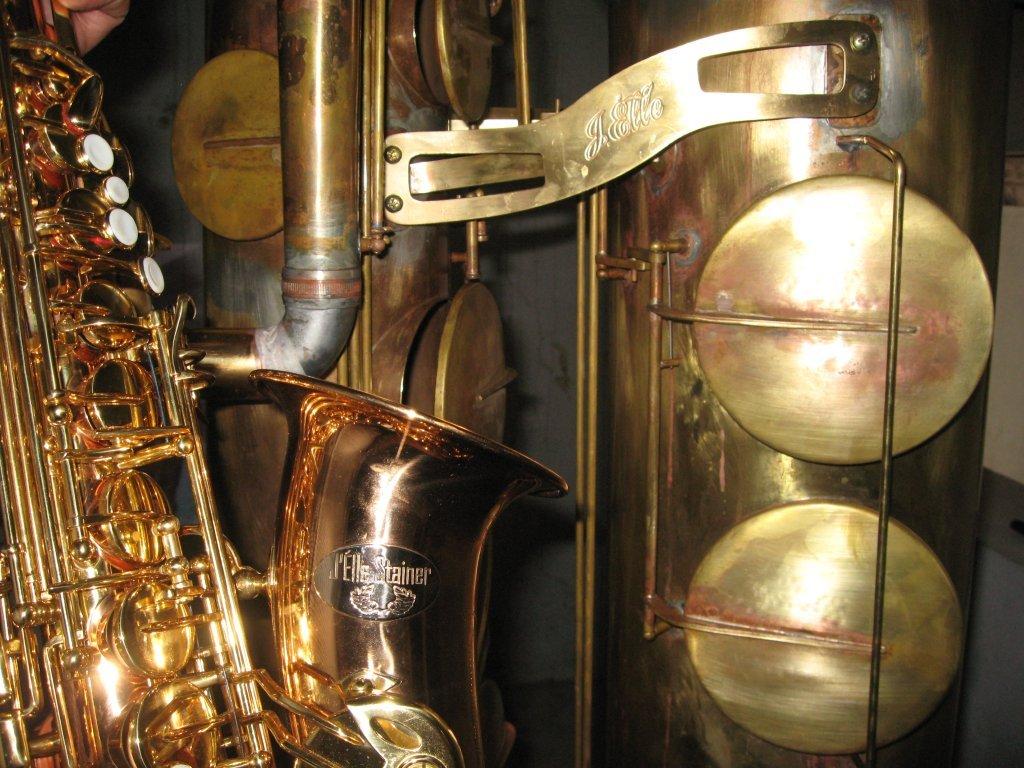

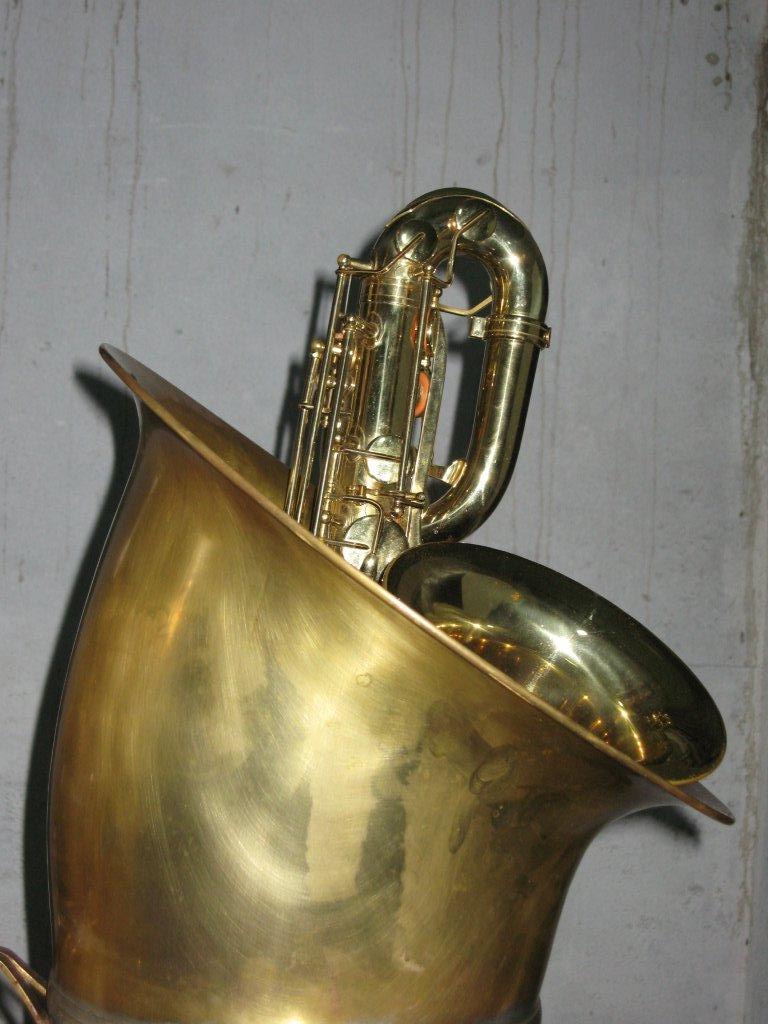
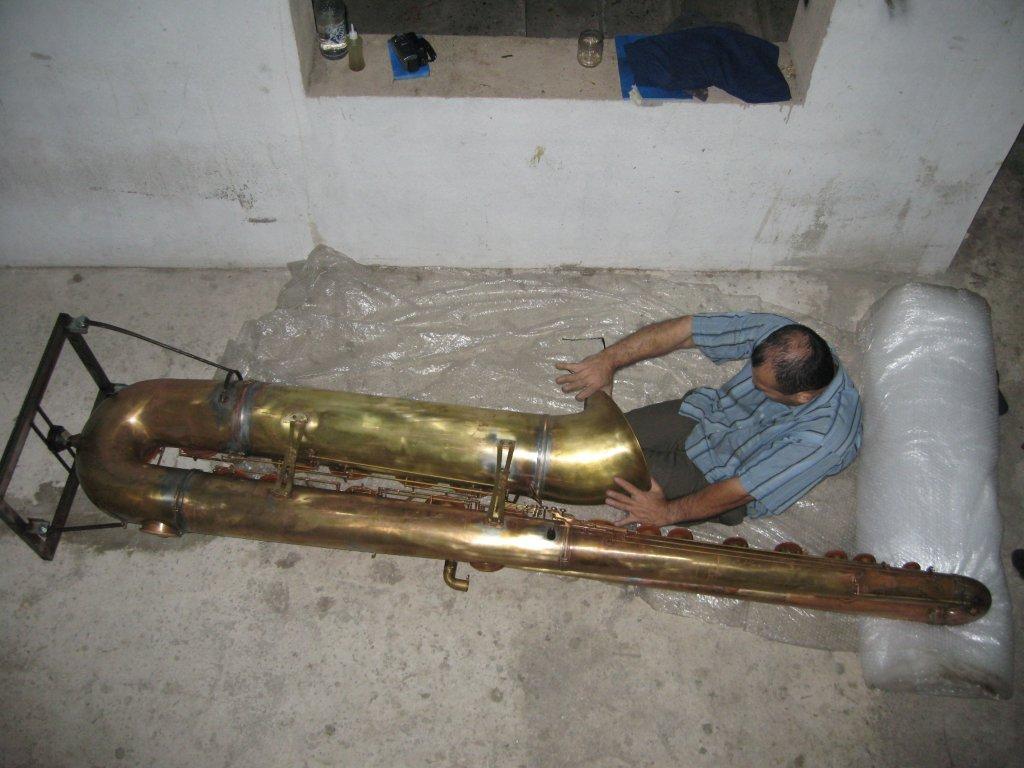
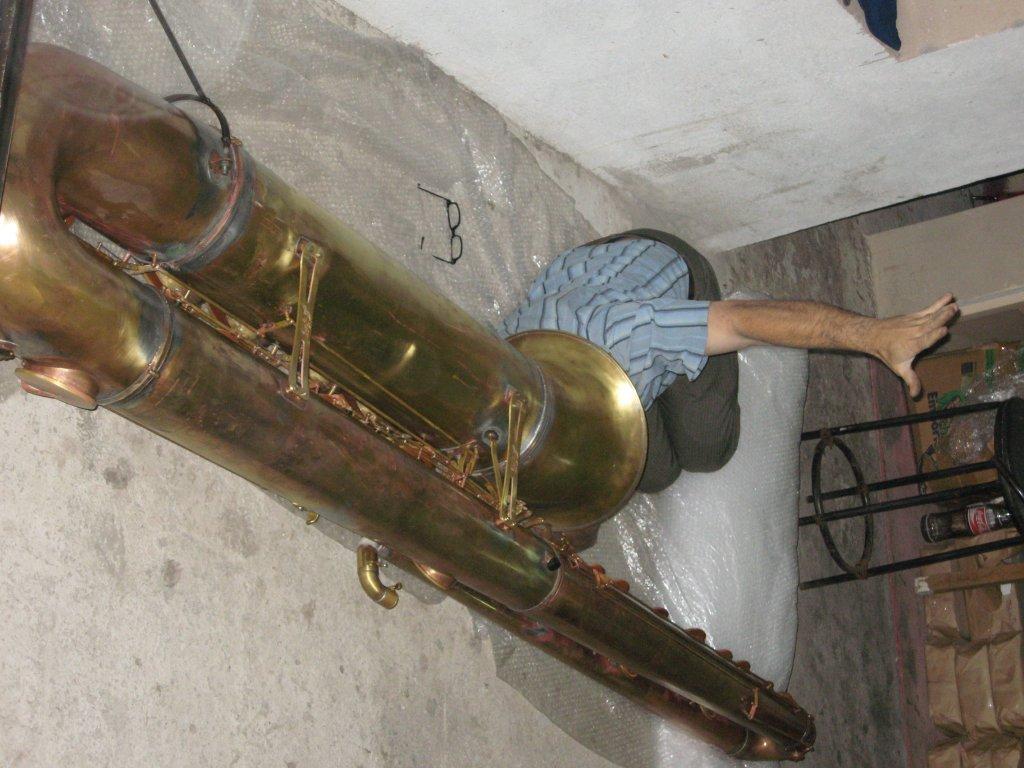
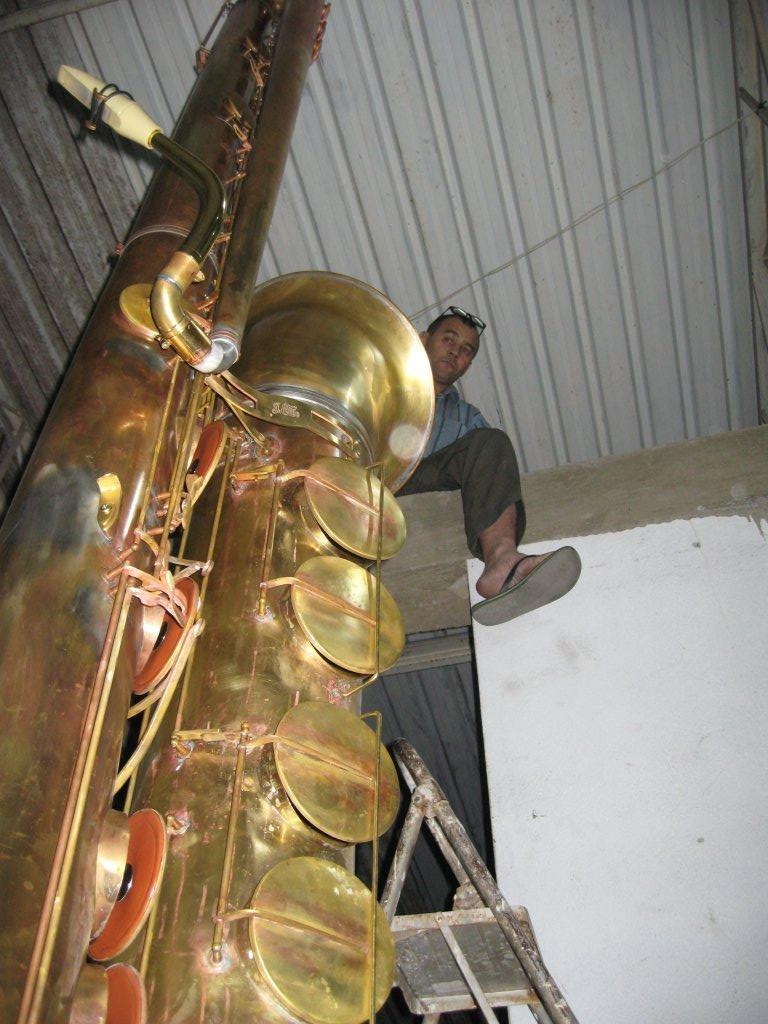

my wife finally put her foot down and said no way.no she really didnt but im sure she would if i said i wanted it.what a monster.thanks helen. 😯
The average house ceilings aren’t high enough stand this monster up. 😯 Oh well, time to buy a bigger house. 😈
I think this sax is very interesting in its own right, but from a practical standpoint: I’m just not seeing it. This is the kind of horn that needs to have its own space. Somewhere where it’s not moved from.
Given the problems that bass saxes have with going out of alignment from just being played, this big boy is going to have that in abundance. Add to that moving it to and from performances or rehearsals. I’m thinking the owner will need to have a live-in tech, or a tech on retainer, in order to have it play perfectly for performances.
I believe it was Emilio Lyons (sp?) who said: There’s no such thing as a minor leak on a bass saxophone. Again, this big guy will have that problem, only much worse.
One thing is for sure, this full size subcontrabass will certainly allow for development of really good lung capacity and breath support. Add minor leaks to the mix, and the owner will be able to play anything, and I do mean anything, that’s thrown at him/her that’s smaller than this. (From a breathing and compensation for leaks perspective, I mean.)